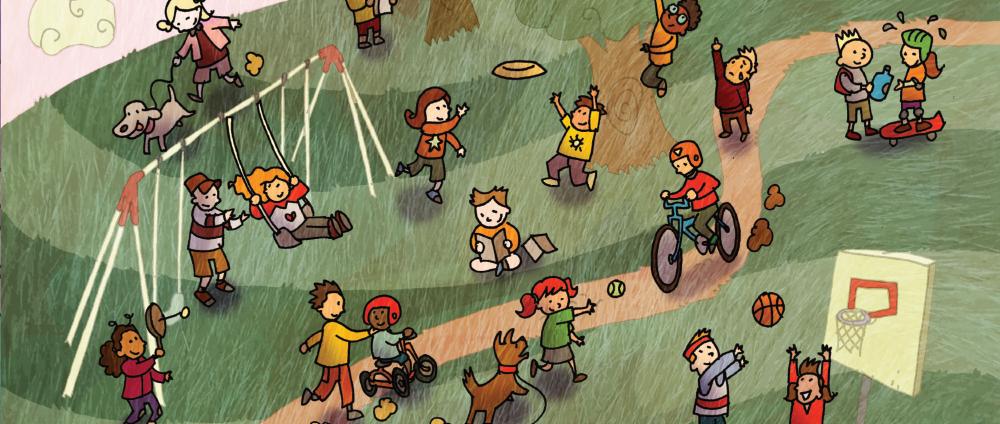
Jesus Heals a Man Who Couldn't See
- Imagine how the man felt when Jesus healed his eyes.
- Sense Jesus' love for people who are hurting.
- Praise Jesus for his healing power.
Leader Reflection
There are several different stories about how Jesus healed people who were unable to see. It's fascinating to see how Jesus handled each one differently, paying attention to the particular needs and feelings of each person.
In this story, Jesus is on his way to Jerusalem for the Passover along the well-traveled and familiar pilgrim route. As he approaches the city along with a large crowd of fellow pilgrims they pass a man who is blind and begging (he's named Bartimaeus in Mark 10:46). In Jesus' day this was the way society dealt with people who were unemployed or unemployable, a kind of ancient welfare system. It was so common to see people begging that, aside from tossing a coin at them now and then, they were virtually invisible.
The man senses that something is happening, as a large crowd passes by with all their noise and jostling. But when he heard that Jesus was among them he began to shout at the top of his lungs to get Jesus' attention. He must have heard a lot about Jesus, because he addresses him as the "Son of David," a title for Jesus found nowhere else in Luke's gospel. It expresses the belief that Jesus is the promised king from the house of David who will rule over Israel—the Messiah.
The people around the man tell him to hush up. Those who begged, as they used to say of children, should be seen but not heard. It's one thing for this man to be at the roadside with a hand out; it's another for him to bother everyone by shouting out. But Bartimaeus will not be quiet. He shouts even louder until Jesus hears him and asks someone to bring him over.
"What do you want me to do for you?" Jesus asks. Strange question. After all, the man has been shouting for mercy, and it must have been obvious that he was blind. But Jesus treats him with respect and human dignity, as a person who can articulate his own wants and needs. Jesus invites Bartimaeus to articulate his own desire, to actually say the words to Jesus.
"Lord, I want to see." The words seem childlike in their simplicity. No excuses, no long story about all he's been through, no doubts about it—I want to see. And Jesus, just as simply and clearly, gives the man what he desires. "Receive your sight; your faith has healed you."
What does Jesus mean, "your faith has healed you"? Has faith done the healing, or has Jesus done the healing? Is a certain level of faith necessary for healing, and if you don't have enough you can't be healed? Is this what some people now call "faith healing," in which gearing up enough faith gets the healing as a reward?
None of the above. There are actually a number of instances in the gospels in which Jesus heals people apart from any previously expressed faith. Jesus' point is that it is faith that drives us to Jesus for help. It's not about the amount of faith (recall the man who said, "I believe, help my unbelief"), but that we look to him for our deepest needs.
Note that Luke places this story alongside of one about the disciples' inability to accept that Jesus would have to suffer and die (Luke 18:31-34). There are all kinds of blindness, and their spiritual blindness points to areas of our life where all of us can be blind.
Steps
Step 1 Breathe
Use this time to focus your attention on God.
Do this with me: calm your head, heart, and hands as you slowly breathe in . . . and out. (Demonstrate a few deep "in and out breaths" with eyes closed.)

Get Unlimited Access!
Sign up for DWELL Digital to unlock all online leader resources, printable pages and session plans.
Call 800-333-8300 or Request Access
Already a subscriber? Log In
Learn About DWELL
DWELL helps kids find their place in God's Big Story. Learn more about this popular and trusted children’s ministry curriculum.
